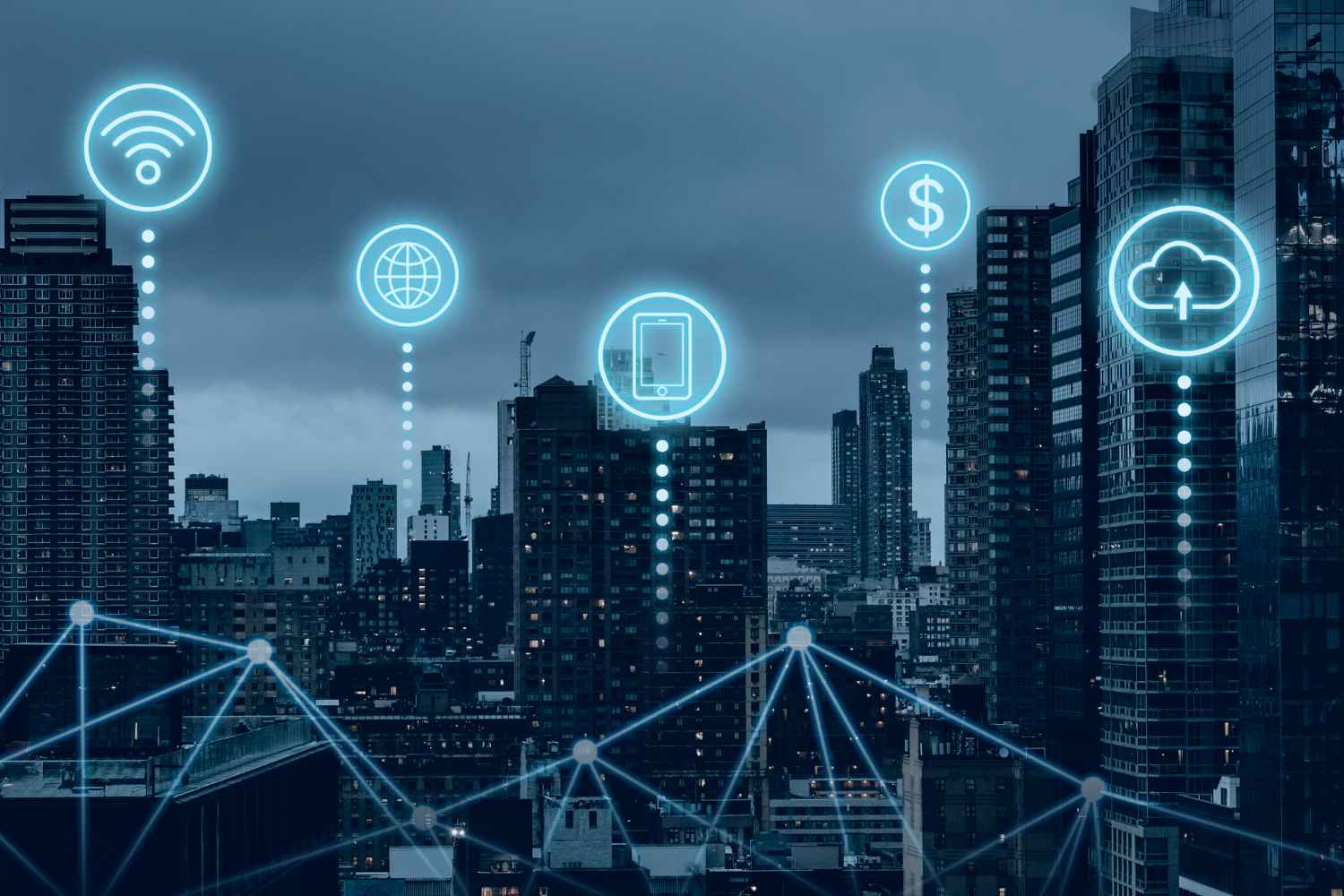IoT (Internet of Things) and connectivity form the foundation of digital infrastructure in smart cities. They enable the seamless flow of data and information among various devices, systems, and stakeholders, making it possible to create intelligent, interconnected urban environments. Here’s how IoT and connectivity contribute to building the foundation for digital infrastructure in smart cities:
Sensor Networks: IoT devices and sensors are strategically deployed across smart cities to collect real-time data about the environment, infrastructure, and services. These sensors can monitor air quality, temperature, humidity, noise levels, traffic flow, waste management, and other parameters. The data gathered from these sensors provides valuable insights that help city authorities optimize resource allocation, improve infrastructure planning, and enhance overall urban operations.
Connectivity Backbone: A robust and reliable connectivity infrastructure is essential for enabling seamless communication and data transfer in smart cities. This includes high-speed internet connectivity, wireless networks (such as Wi-Fi and cellular networks), and emerging technologies like 5G. A strong connectivity backbone ensures that devices, sensors, and systems can communicate efficiently, facilitating real-time data exchange and enabling swift decision-making and response.
Data Aggregation and Analytics: IoT devices generate massive amounts of data, and smart cities rely on data aggregation and analytics platforms to make sense of this information. These platforms collect, analyze, and visualize data from various sources, providing valuable insights for city planners, administrators, and service providers. Data analytics helps identify patterns, trends, and anomalies, enabling evidence-based decision-making and optimization of urban services.
Smart Infrastructure Management: IoT and connectivity enable efficient management of critical urban infrastructure. For example, connected sensors and devices can monitor the performance of bridges, roads, utilities, and public facilities in real-time. This allows for predictive maintenance, early fault detection, and proactive repairs, minimizing disruptions and enhancing the safety and reliability of infrastructure.
Intelligent Transportation Systems: IoT and connectivity play a significant role in transforming transportation systems within smart cities. Connected vehicles, traffic management systems, and real-time data from sensors enable efficient traffic flow management, congestion reduction, and optimized transportation services. Intelligent transportation systems enhance road safety, reduce travel times, and promote sustainable modes of transportation.
Citizen Engagement and Services: IoT devices and connectivity facilitate citizen engagement and improve the delivery of public services. Smart city applications, mobile apps, and digital platforms enable citizens to access information, report issues, and participate in decision-making processes. Citizens can receive personalized alerts, access real-time transportation information, and engage with smart city services, enhancing their overall urban experience.
Energy and Resource Management: IoT and connectivity enable smart energy and resource management in smart cities. Connected sensors and devices can monitor energy consumption, water usage, waste management, and environmental factors. This data helps optimize resource allocation, identify inefficiencies, and promote sustainable practices. Smart grids and intelligent energy management systems enable real-time monitoring and control of energy distribution, facilitating energy conservation and reducing environmental impact.
Safety and Security: IoT and connectivity contribute to enhancing safety and security in smart cities. Video surveillance systems, emergency response systems, and connected sensors can detect and respond to potential risks or incidents promptly. Real-time monitoring and analytics enable quick identification of security threats, enabling authorities to take proactive measures and ensure the safety of residents and visitors.
IoT and connectivity are foundational elements in the development of smart cities, providing the necessary infrastructure for data-driven decision-making, efficient resource management, improved services, and enhanced quality of life. By leveraging these technologies, smart cities can optimize operations, reduce costs, promote sustainability, and create more livable and resilient urban environments.



